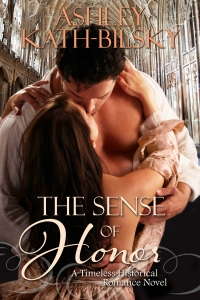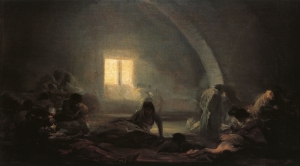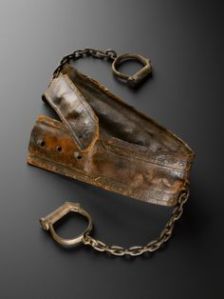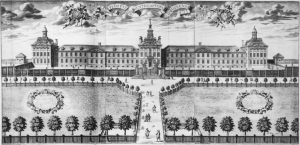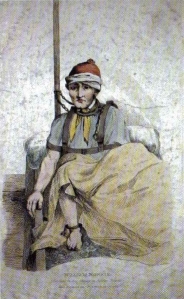Tags
Abbie Rowe, Abraham Lincoln, Ashley Kath-Bilsky, Best-selling author, Between the Shadows, BOOKS, Ghosts, Historical Fiction, Joshua P. Warren, Kim Russo, Lincoln's Ghost, Literary Fiction, Paranormal, Regency England, Scotland, Seances, The Legion of Mithras, White House
All Hallow’s Eve begins each year at midnight on October 31st. According to legend, it is the one day when the spirits of the dead return to walk among the living. So, what better time to address the continuing mystery that has confounded and intrigued people for centuries? Namely…
What happens after we die? Do ghosts exist? Do all souls go to heaven? If not, do restless spirits haunt people and places? No matter where you live on this beautiful blue marble of a planet, the possibility of ghosts (or spirits) continues to haunt us.
 Pictured is the cover of my Historical Paranormal Thriller, BETWEEN THE SHADOWS. Set in 1813 England and Scotland, BETWEEN THE SHADOWS is a stand-alone novel, but the first in THE LEGION OF MITHRAS series. Release date for both E-book and Print is 13 November 2015.
Pictured is the cover of my Historical Paranormal Thriller, BETWEEN THE SHADOWS. Set in 1813 England and Scotland, BETWEEN THE SHADOWS is a stand-alone novel, but the first in THE LEGION OF MITHRAS series. Release date for both E-book and Print is 13 November 2015.
BETWEEN THE SHADOWS introduces Patience Sinclair, a 19-year old Scotswoman who realizes communicating with ghosts is just the beginning of her powers when she is asked to join a secret group of young, powerful English lords to conquer evil in Regency England.
THE LEGION OF MITHRAS series also introduces readers to the other members of the Legion, and the extraordinary powers they possess. Follow the Legion’s remarkable heroine, Patience Sinclair, (the first female member of the group), on a challenging and often terrifying journey to not only embrace that which has set her apart from others, but realize the importance of facing one’s greatest fears to help others. Of course, I hope some (if not all of you) will read it.
For now, however, let’s talk about how ghosts have influenced literature, films, and even history.
You may have visited a Ghost Town in the American West, where dusty streets and a neglected cemetery are all that remains of the people who once lived there? Perhaps you toured a castle in Scotland reputed to be haunted? I have and, trust me, there are several. You may even have experienced an adrenaline rush hearing ghostly footsteps behind your back. Or, a rush of cold air that came from out of nowhere. Was it just your overactive imagination or did that gathering mist take the shape of a person? Then again, perhaps you just love a good ghost story.
 Numerous great works of classic literature feature ghosts or spectral apparitions including: ‘A Christmas Carol’ by Charles Dickens (1843), ‘The Woman in White’ by Wilkie Collins (1859), ‘The Canterville Ghost’ by Oscar Wilde (1887), ‘The Turn of the Screw’ by Henry James (1898), ‘The Shining’ by Stephen King (1997), as well as ‘Macbeth’ (1606) and ‘Hamlet’ (1602) by William Shakespeare. [Pictured: Costume sketch for Hamlet, Act I, featuring the father of Hamlet and the spirit warriors. Public Domain]
Numerous great works of classic literature feature ghosts or spectral apparitions including: ‘A Christmas Carol’ by Charles Dickens (1843), ‘The Woman in White’ by Wilkie Collins (1859), ‘The Canterville Ghost’ by Oscar Wilde (1887), ‘The Turn of the Screw’ by Henry James (1898), ‘The Shining’ by Stephen King (1997), as well as ‘Macbeth’ (1606) and ‘Hamlet’ (1602) by William Shakespeare. [Pictured: Costume sketch for Hamlet, Act I, featuring the father of Hamlet and the spirit warriors. Public Domain]
 Popular fiction for children that also featured ghosts and/or addressed spiritualism have become classics which continue to enthrall young audiences, from ‘The Legend of the Sleepy Hollow’ by Washington Irving (1862) to the worldwide phenomenon of the amazing Harry Potter 7-book series (1997-2007) by J.K. Rowling.
Popular fiction for children that also featured ghosts and/or addressed spiritualism have become classics which continue to enthrall young audiences, from ‘The Legend of the Sleepy Hollow’ by Washington Irving (1862) to the worldwide phenomenon of the amazing Harry Potter 7-book series (1997-2007) by J.K. Rowling.
Regardless how many centuries have eclipsed into history, fascination about ghosts, haunted locations, misty apparitions, and even psychic communications with the spirit realm remain strong.
Films, stage plays, and television continuously adapt many works of Gothic or paranormal fiction to their medium, and quite profitably.
Let’s face it; death is the final door through which we all must pass. And the number of people in the 21st century who still seek to obtain an answer to this ancient mystery has, if anything, grown stronger.
Ghost Adventures and Ghost Hunters are two popular television shows that focus on paranormal investigators as they endeavor to understand and investigate reported hauntings or paranormal activity. Armed with equipment and devices such as thermal and night vision cameras, EMF (electromagnetic field) monitors, digital video cameras and audio recording devices, they seek to prove (or disprove) the existence of ghosts or paranormal occurrences.
 Another hit television series with an ever-growing audience is LMN’s The Haunting Of… with psychic medium Kim Russo. Each episode documents Ms. Russo as she accompanies celebrities to places where they experienced traumatic paranormal experiences, seeking answers. Without question there are many cynics about the existence of ghosts, or any individual professing they can communicate with the dead. However, Ms. Russo continuously demonstrates her extraordinary ability and otherworldly clarity, especially when she acknowledges departed loved ones by name and private, personal information she would have no way of knowing without her gift. I have also had the opportunity to meet Kim Russo in person, and even had my skeptical husband with me. He was astonished and now watches her show regularly with me. [For more information on Kim Russo, visit: The Haunting Of…with Kim Russo
Another hit television series with an ever-growing audience is LMN’s The Haunting Of… with psychic medium Kim Russo. Each episode documents Ms. Russo as she accompanies celebrities to places where they experienced traumatic paranormal experiences, seeking answers. Without question there are many cynics about the existence of ghosts, or any individual professing they can communicate with the dead. However, Ms. Russo continuously demonstrates her extraordinary ability and otherworldly clarity, especially when she acknowledges departed loved ones by name and private, personal information she would have no way of knowing without her gift. I have also had the opportunity to meet Kim Russo in person, and even had my skeptical husband with me. He was astonished and now watches her show regularly with me. [For more information on Kim Russo, visit: The Haunting Of…with Kim Russo
The concept of spiritualism, aka the ability to communicate with the dead, now brings me to The White House. Picture this. The country is at war. Death seems to surround everyone and, most likely, a sense of hopelessness as well. As America’s then Commander-In-Chief wearily tries to focus his attention on the dire circumstances of his Presidency, he is also cognizant that his fragile wife is overcome with grief–unable to come to terms with the death of two of her young sons. And so it was that on 23 April 1863, President Abraham Lincoln attended a séance. Was it any wonder that Mary Todd Lincoln, lost in the enveloping waters of her sadness, grasped onto the possibility of communicating with her boys.
 According to ‘Abraham and Mary’ by Kenneth J. Winkle, Mary Todd Lincoln participated in eight séances at The White House, and one at the Soldier’s Home. As a pragmatic man, Lincoln perhaps attended the first séance out of concern for his wife’s welfare and skepticism whether the medium was honest or a charlatan. The fact that he allowed his wife to continue the séances at The White House might be attributed to Lincoln’s belief in whatever happened at that April 1863 séance, or that his wife seemed comforted by the experience…perhaps both.[Pictured: Seance. Public Domain]
According to ‘Abraham and Mary’ by Kenneth J. Winkle, Mary Todd Lincoln participated in eight séances at The White House, and one at the Soldier’s Home. As a pragmatic man, Lincoln perhaps attended the first séance out of concern for his wife’s welfare and skepticism whether the medium was honest or a charlatan. The fact that he allowed his wife to continue the séances at The White House might be attributed to Lincoln’s belief in whatever happened at that April 1863 séance, or that his wife seemed comforted by the experience…perhaps both.[Pictured: Seance. Public Domain]
I tend to think that since Lincoln sanctioned the séances at The White House, he must have experienced some type of validation. One must also remember that Abraham Lincoln clearly had psychic ability of his own. Ten days before his Assassination, he experienced a prophetic dream that he would be killed. Three days before his death, he told his friend and biographer, Ward Hill Lamon, about the vivid, disturbing, recurring dream. Each night of the three nights leading up to the day of his Assassination, Lincoln had the same dream. Ultimately, on the fateful day, Lincoln told William H. Crook (a bodyguard) about the dreams. Although Crook advised Lincoln to not attend the play that evening, the President replied he’d promised his wife. Then, as he departed The White House, Lincoln said ‘goodbye’ to Crook, the first and only time he’d said that to the man. Before that instance, Lincoln always bid Crook ‘goodnight’.
After the assassination of her husband, Mary Todd Lincoln’s interest in spiritualism increased. She continued to attend and participate in séances. Whether or not the mediums whose services she sought were truly gifted we will never know. One can only hope they did not prey upon such a fragile lady who had lost so much and suffered such heartbreaking losses.
 Ironically, it is President Lincoln himself who has been documented by many guests and staff members to haunt The White House. Among those who have professed to see the ghost of Abraham Lincoln are British Prime Minister Winston Churchill, Queen Wilhemina of the Netherlands, and even Maureen Reagan (daughter of President Ronald Reagan). [Pictured: Abraham Lincoln. Public Domain]
Ironically, it is President Lincoln himself who has been documented by many guests and staff members to haunt The White House. Among those who have professed to see the ghost of Abraham Lincoln are British Prime Minister Winston Churchill, Queen Wilhemina of the Netherlands, and even Maureen Reagan (daughter of President Ronald Reagan). [Pictured: Abraham Lincoln. Public Domain]
According to Lincoln biographer Doris Kearns Goodwin, one of Lincoln’s neighbors in Illinois asked if he believed in a future realm after death. Lincoln allegedly replied, “I’m afraid there isn’t. It isn’t a pleasant thing to think that when we die, that is the last of us.”
 Pictured left is a very intriguing photo taken in 1950, that appears to show the full body ghostly apparition of a man. Is it Abraham Lincoln? From 1949-1952, President Harry S. Truman authorized necessary structural renovations of The White House.
Pictured left is a very intriguing photo taken in 1950, that appears to show the full body ghostly apparition of a man. Is it Abraham Lincoln? From 1949-1952, President Harry S. Truman authorized necessary structural renovations of The White House.
The photograph was taken by U.S. National Park Service photographer, Abbie Rowe. The intended subject matter is the work being done beneath The White House. In the foreground, we see a man smiling at the camera and seated on the bulldozer. Also visible are three men talking in the background on the left. However, look at the background on the right. There is what appears to be the full body apparition of a man wearing a 3/4-length great coat from the 1860s, with arms folded across his chest. I should also mention this translucent figure happens to be standing beneath the Lincoln Bedroom.
 Judging by the stance of this figure, he appears to have been watching the man working the earth-moving machine, (no doubt something that would have fascinated Lincoln). However, despite his forward stance, the figure’s face is turned toward the high windows as if something else caught his attention. His face appears (at least to me) to be in profile. You can see his hair, forehead, and he has a beard like Lincoln. If nothing else, it is fascinating to speculate.
Judging by the stance of this figure, he appears to have been watching the man working the earth-moving machine, (no doubt something that would have fascinated Lincoln). However, despite his forward stance, the figure’s face is turned toward the high windows as if something else caught his attention. His face appears (at least to me) to be in profile. You can see his hair, forehead, and he has a beard like Lincoln. If nothing else, it is fascinating to speculate.
Paranormal Investigator and Author, Joshua P. Warren, discusses his extensive research on the Abbie Rowe photograph in a short video on his website. If you would like to see the video, or learn more about this photograph and the research conducted by Joshua P. Warren, visit: Joshua P. Warren – The White House Ghost Photo .
One can only wonder if Lincoln indeed haunts the White House. If so, why? Does he perhaps feel his job was not quite finished? Does he remain in spirit to guard The White House, or its inhabitants? What wisdom does he wish to impart, if indeed his spirit lingers? Can a physical death destroy an intangible soul? Or, does that soul move on and–on occasion–visit the living? Just like the legend of All Hallows’ Eve.
And so, the mystery continues. We still search for answers. Until then, what do you believe? ~ AKB
 PS: And if you’re looking for a thrilling ghost story, please check out my new book, BETWEEN THE SHADOWS, scheduled for release on November 13th.
PS: And if you’re looking for a thrilling ghost story, please check out my new book, BETWEEN THE SHADOWS, scheduled for release on November 13th.




